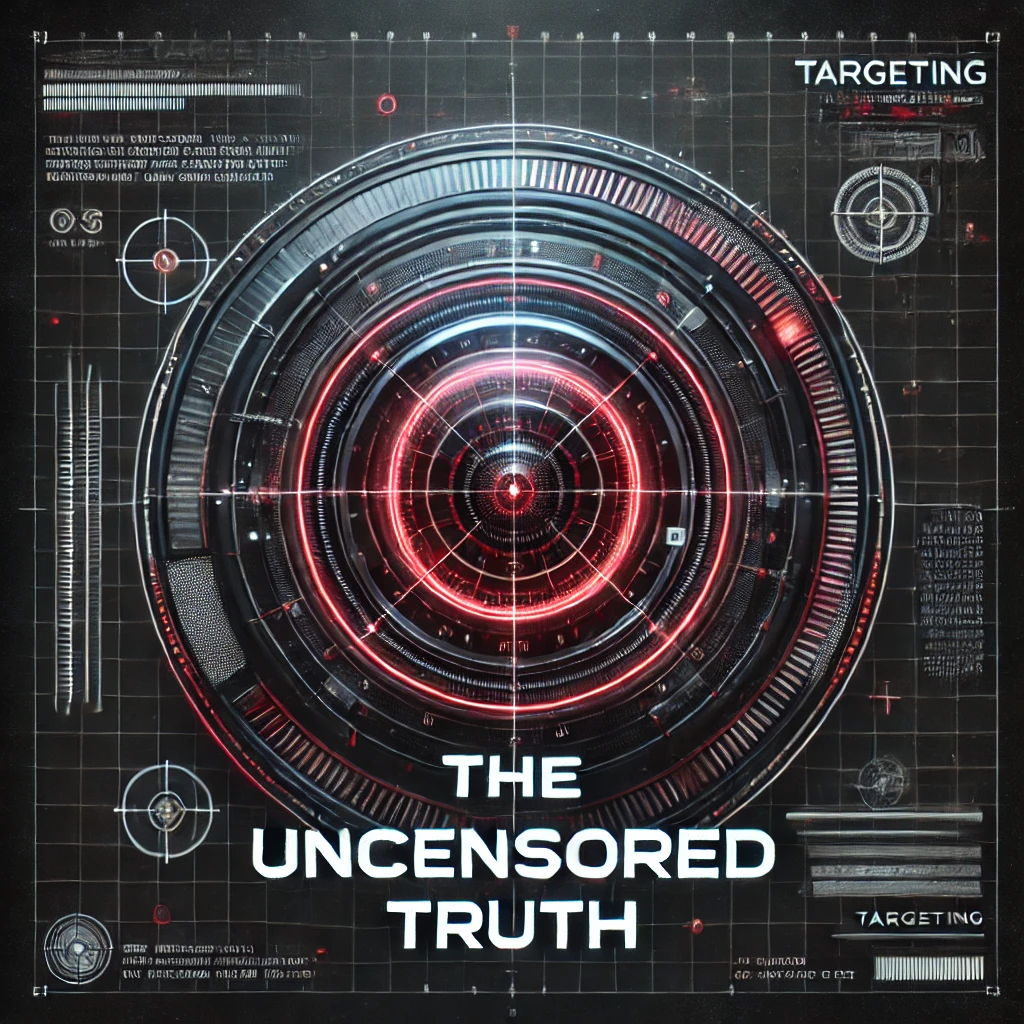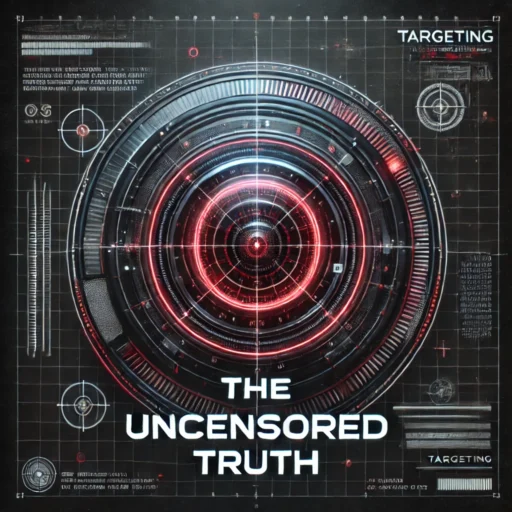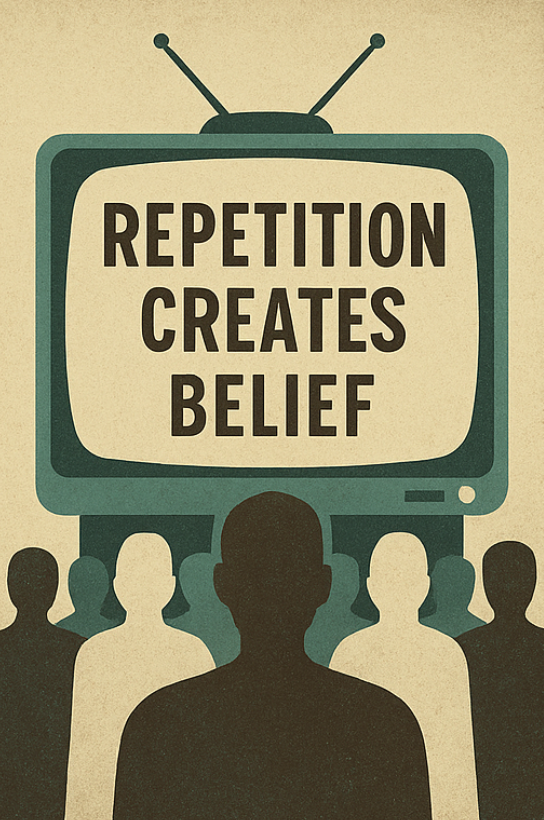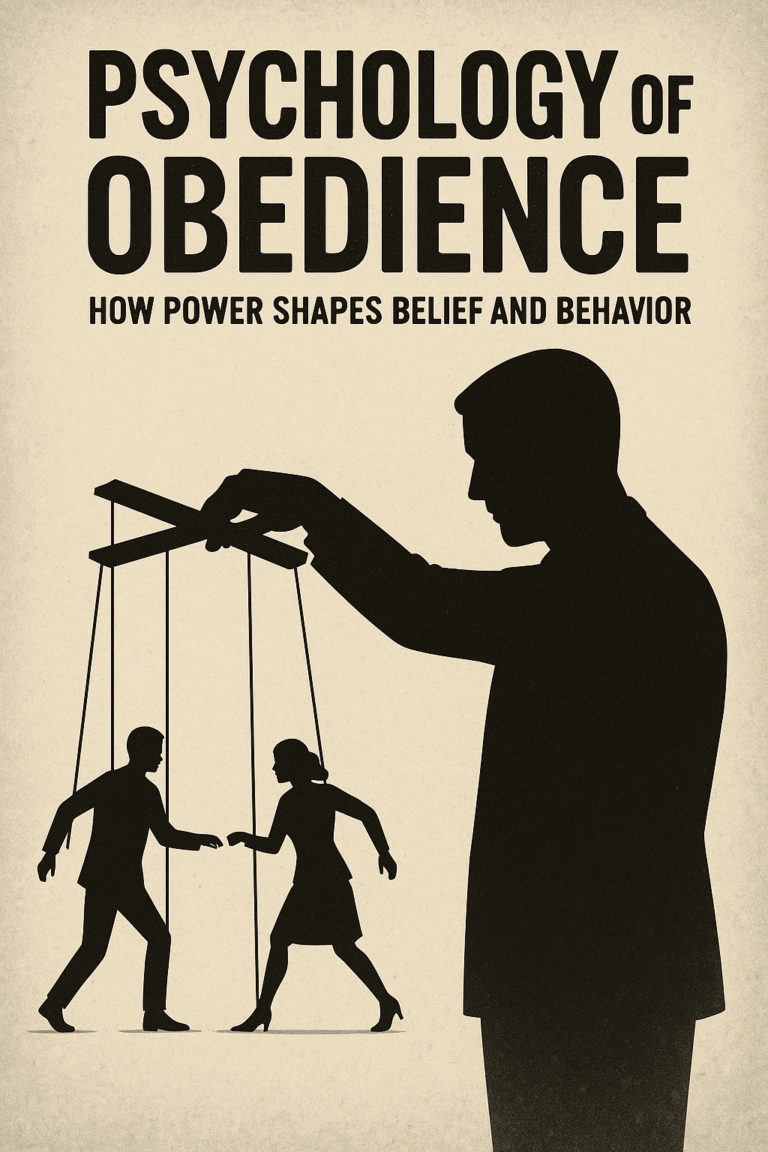In this installment of The Psychology of Control, we examine a powerful principle: a statement repeated often enough can start to feel true. The old adage “repeat a lie often enough and it becomes the truth” is widely attributed to Nazi propagandist Joseph Goebbels, and disturbingly, decades of research suggest there’s something to it.
From political slogans and advertising jingles to internet memes and news cycles, repetition saturates our environment. This article investigates the psychological mechanisms behind how repetition creates belief, explores historical and modern examples of belief-shaping through repetition, and considers the implications for social control and public perception.
Psychological Mechanisms: Why Repetition Creates Belief
Modern psychology has identified several mechanisms that explain why hearing or seeing something repeatedly can lead us to accept it as true or develop a preference for it. At the core is our brain’s tendency to equate familiarity with truth or positivity. Repetition makes information easier to process, and our minds interpret that ease as a signal of accuracy or likability.
In other words, the more familiar an idea feels, the more inherently valid or appealing it seems. This section explores two key cognitive biases – the illusory truth effect and the mere-exposure effect – that reveal how repetition creates belief at a subconscious level.
The Illusory Truth Effect: When Repetition Creates Belief
One major factor in our susceptibility to repeated messages is known as the illusory truth effect, sometimes called the “illusion of truth.” This cognitive bias is the tendency to believe information is true after repeated exposure, even if it’s false. In classic experiments dating back to 1977, researchers found that when participants were presented with a mix of true and false trivia statements multiple times over several weeks, they became more confident that the repeated statements were true – regardless of the statement’s actual veracity. In essence, repetition can manufacture a sense of truth. Our brains respond faster to familiar statements, and we unconsciously mistake that fluency for factual accuracy
Psychologist Lisa Fazio explains that after you hear something a second or third time, you get a “gut-level feeling” that it might be true, simply because it’s more familiar. Critically, the illusory truth effect can occur even when we should know better. Studies have shown that prior knowledge does not fully protect against this bias.
In one experiment, people who knew the correct answer to a question still became less certain after reading a contrary false statement twice – moving an item from “definitely false” to “probably false” on average. Repetition sowed a seed of doubt. Likewise, repeated myths (e.g. “Vitamin C prevents colds”) may start feeling credible over time, despite initial skepticism
Alarmingly, the effect persists even when the source of information is dubious or when the statements are explicitly labeled as false upfront. In one 2018 study, participants of both political parties saw fake news headlines (such as a completely fabricated story about a political figure) and rated them as more accurate if they had seen them before, demonstrating that repetition creates belief across the board.
Why is our mind so vulnerable to this illusion? Psychologists point to the role of cognitive ease or processing fluency. When information is familiar, our brains process it with less effort, and we interpret that ease as a positive signal – often as a feeling that the content is true.
Repetition essentially primes the mind, reducing the mental friction and making the statement “feel” right. This heuristic usually serves us well in daily life: much of what we hear repeatedly (e.g. common knowledge or well-established facts) is true, so using familiarity as a shortcut isn’t always harmful. But in cases of deliberate falsehoods or errors, this mental shortcut can lead us astray.
It’s important to note limitations of the illusory truth effect. Research indicates the bias is strongest for claims that are ambiguous or not blatantly false at first glance. Outlandish statements can also gain a foothold, but they might need more repetition or supporting context to seem plausible. Moreover, if people are alerted ahead of time to focus on accuracy, or if they engage in active fact-checking, the power of repetition can be blunted. In other words, a vigilant, analytical mindset can serve as a defense. Indeed, psychologists have found that repetition’s persuasive punch is most powerful when the audience is not paying close attention or is mentally fatigued.
Attentive listeners are more likely to notice contradictions or the lack of evidence, preventing mere frequency from overriding their logic. Still, even the diligent are not fully immune – which is why relentless misinformation can gradually erode the certainty of experts and laypeople alike.
Read more about it here.
The Mere-Exposure Effect: How Repetition Creates Belief Through Familiarity
A closely related phenomenon is the mere-exposure effect, sometimes called the familiarity principle. Whereas the illusory truth effect involves judging truthfulness, the mere-exposure effect involves developing a preference for things simply because they are familiar. In 1968, psychologist Robert Zajonc famously demonstrated that people tend to rate unfamiliar stimuli (like foreign words, symbols, or faces) more favorably after repeated exposure, even if they have no conscious memory of seeing them before. In one study, participants saw a set of unfamiliar Chinese characters flashed briefly. Later, they rated those characters as more pleasant or associated with positive meanings compared to characters they had never seen
In another classic example, a researcher attended a college class dressed in a large black bag over several sessions; initially the students were hostile, but as the mysterious figure kept appearing, students grew more curious and friendly – illustrating that repeated exposure bred familiarity and acceptance
The mere-exposure effect shows that familiarity breeds liking (up to a point). The psychological explanation is rooted in evolutionary logic: unfamiliar things might signal danger, whereas familiar things have proven non-threatening, so we instinctively lean toward what we’ve seen before. As one behavioral science source explains, “The more familiar something feels, the safer and more appealing it seems.”
Repetition essentially reduces uncertainty. Even without any logical reason to favor something, our brains register it as comfortingly familiar. This is why, for example, we might prefer a song after hearing it a few times, or why we choose a known brand over an unknown one. Mere exposure can even work at a subconscious level – studies have found people develop slight preferences for images or sounds they’ve been exposed to subliminally (too briefly to consciously notice), though the effect is weaker and context-dependent.
While mere exposure by itself doesn’t create factual beliefs, it lays the emotional groundwork that can make messages more persuasive. A person who feels positively toward a familiar source or concept may be more inclined to accept claims related to it. Repetition can thus shape belief indirectly by increasing trust or affinity. This dynamic is at the heart of advertising and propaganda, as we’ll explore later. It’s worth noting, however, that mere exposure has its boundaries. If someone already has a strong negative attitude toward something, simply repeating it will not magically transform hate into love.
In fact, too much repetition can backfire – an effect known as “wear-out.” Researchers have observed that exposing people to a message beyond an optimal number of times (often a few exposures in experimental settings) can lead to boredom or irritation, diminishing its persuasive effect. And if the repetition is too obvious or monotonous, people may become skeptical or tune it out. In short, repetition creates belief and preference most effectively when the audience is initially neutral or only mildly opposed, and when the exposures are frequent enough to establish familiarity but not so excessive as to prompt backlash.
Read more about it here.
Propaganda and the “Big Lie”
Repetition has long been a cornerstone of propaganda – the art of mass persuasion often employed by political regimes, movements, or campaigns. Propagandists understand that controlling the narrative often means repeating it relentlessly until it sinks in. Historic examples abound of how repeated falsehoods or slogans have shaped public belief on a grand scale. Adolf Hitler, in his 1925 work Mein Kampf, discussed the idea that a big lie, repeated persistently, would be believed because people would assume no one “could have the impudence to distort the truth so infamously.” Later, the Nazi propaganda machine under Joseph Goebbels put this into brutal practice. They inundated German society with a barrage of messages scapegoating Jews and other enemies, using every available channel – speeches, posters, newspapers, radio – to hammer the same themes over and over. Nazi propaganda repeatedly claimed that Jews held secret power over world affairs and had initiated a war against Germany, thus justifying “annihilating” them in self-defense. These extreme lies, repeated ad nauseam, laid the psychological groundwork for public acquiescence (or active participation) in horrific policies.
Historical Propaganda: Repetition Creates Belief on a Mass Scale
The Nazi usage of repetition to manufacture belief is encapsulated in the concept of the “Big Lie.” A statement often attributed to Goebbels (though of uncertain origin) summarizes this strategy: “If you tell a lie big enough and keep repeating it, people will eventually come to believe it.”. While the Nazis did not invent propaganda, they perfected a modern model of saturating the public with persistent messaging. For example, the false notion that Germany’s Jewish population was responsible for all societal ills was not stated just once; it was incessantly pushed from every angle. Over time, many ordinary Germans came to internalize outrageous fabrications (e.g. that Jews conspired internationally to undermine Germany) as if they were obvious truths. In essence, repetition was used to engineer a consensus – an artificial reality – through sheer force of frequency. As one analysis of Nazi propaganda noted, a Big Lie repeated enough effectively becomes “its own evidence base – hear something enough and it becomes truth”, with the repetition itself taken as proof.
Other totalitarian regimes in history have employed similar repetitive tactics. In the Soviet Union, Stalinist propaganda endlessly exalted the leader and the Communist Party with simple slogans and mantras (“Stalin is the wisest of men,” “Life has become better, life has become happier”), printed and broadcast everywhere. Dissenting voices were silenced, creating an echo chamber of official messaging. In Maoist China, the population was instructed to chant Mao Zedong’s quotes daily; the Little Red Book of Mao’s sayings became a omnipresent tool of indoctrination through repetition. Even in more democratic societies during wartime, governments have used repetitive propaganda to bolster public support or demonize the enemy (for instance, World War II Allied propaganda repeated themes of sacrifice and victory to maintain morale, while exaggerating enemy barbarity to reinforce resolve). These examples underscore that repetition creates belief not only in isolated individuals, but across entire societies when backed by state power and media control.
It is important to recognize that propaganda repetition often works in tandem with emotional appeals. The messages are typically simple and slogan-like (“Ein Volk, ein Reich, ein Führer” – “One People, One Empire, One Leader”) so they stick in memory and are easy to repeat. They play on existing prejudices or fears, which makes each repetition hit harder. Over time, the population may start echoing the slogans themselves, a sign that the beliefs have been internalized. At mass rallies in 1930s Germany, crowds shouted back the refrains fed to them by leaders – a synchronization of belief achieved by repetition and social reinforcement.
Modern Propaganda and Misinformation in the Information Age
While we might hope that we’ve grown savvier since those dark chapters of history, modern propaganda and misinformation campaigns show that repetition remains a go-to instrument for shaping beliefs. What has changed are the technologies and scale. In today’s media-saturated environment, a false narrative can be repeated countless times across television, social media, and online news, sometimes by thousands of coordinated voices (or even automated bots). One contemporary propaganda model termed the “firehose of falsehood” by RAND researchers describes one approach to information warfare: push out a high volume of messages rapidly, continuously, and across numerous channels without regard for truth, such that the audience is overwhelmed by repetition and ubiquity.
Because propagandists lack commitment to objective reality, they will recycle debunked stories or switch to new variations of a lie and repeat those, firehose-style. The psychological literature supports the effectiveness of this strategy – high volume, multi-channel repetition makes messages more familiar and thus more believable to people exposed to them. Even absurd claims gain traction if they are repeated often, by multiple seemingly independent sources. By the time one falsehood is debunked, the propagandists have already moved to the next, continuing the cycle.
We see similar tactics employed in domestic politics and online misinformation ecosystems, across the entire political spectrum. A piece of fake news or a rumor will be posted and re-posted across forums, Facebook groups, tweets, and YouTube videos, creating an illusion of consensus. The repetition here not only increases familiarity but also gives a social signal – as if, because so many people are talking about it, it must contain some truth. Psychologically, people take repetition as a cue that others accept the claim, which further boosts its credibility in a self-reinforcing loop.
Modern media dynamics, including 24-hour news cycles and algorithm-driven content feeds, amplify the repetitive propagation of messages. News outlets often latch on to a particular narrative and reiterate it continuously (sometimes phrased slightly differently each time) to fill air time. Viewers might hear a catchphrase or talking point dozens of times in a single day’s news – think of phrases like “weapons of mass destruction,” repeated in the lead-up to the Iraq War, which cemented a public belief in a threat that ultimately did not exist. Social media algorithms, meanwhile, tend to show users more of what they have engaged with before, which can result in echo chambers: you end up seeing the same ideas echoed and repeated by like-minded peers. If one’s feed is dominated by a single perspective, repeated posts can give an impression that “everyone” thinks this way, normalizing beliefs that could be fringe or false.
Both authoritarian propagandists and opportunistic misinformation peddlers exploit our brain’s repetition-bias quirks. They understand that a lie need not be particularly clever or plausible – it simply needs to be repeated loudly and often. Over time, doubt and dissent can be worn down. As one analysis noted, repeated falsehoods, even if recognized as lies initially, can eventually produce a cynicism or confusion that benefits those in power. People might start to think “well, I keep hearing this claim – maybe there’s something to it,” or at least become unsure of what’s true. In extreme cases, constant lying can induce a state where the public loses faith in the possibility of truth at all. Historian Hannah Arendt warned of this in the context of totalitarian regimes: “If everybody always lies to you, the consequence is not that you believe the lies, but rather that nobody believes anything any longer… And a people that no longer can believe anything cannot make up its mind. It is deprived… of its capacity to think and to judge. And with such a people you can then do what you please.”. This chilling observation underscores that beyond making specific false beliefs seem true, repetition can corrode the very notion of objective truth, leaving a populace manipulable and pliant.
Read more about it here.
Mere Exposure in Advertising and Media
Propaganda’s political repetition has its counterpart in the commercial sphere: advertising. Marketers have long harnessed the mere-exposure effect, knowing that consumers are more likely to favor brands and products they’ve seen repeatedly. In fact, one of the most straightforward marketing tactics is simple repetition – plastering your brand name or message everywhere possible to create familiarity. Think of how slogans like “Just Do It” or jingles like McDonald’s “I’m Lovin’ It” are incessantly repeated in ads; over time they become ingrained in our memory (sometimes annoyingly so), but also associated with a sense of familiarity and trust.
In the advertising world, it’s often said that consumers need to see an advertisement several times before it makes an impact. The first few exposures might not even register consciously, but eventually the brand name or message forms a “memory trace” in the mind. Research supports this: even if people don’t actively recall an ad, repeated fleeting encounters with it can create a subconscious positive feeling toward the brand. “These fleeting, repeated encounters can nonetheless create a warmth toward the brands,” explains marketing researcher Anthony Grimes, and that warmth influences consumer judgments later on. In essence, repetition creates belief in advertising not as an overt conviction (“I believe this product is the best because the ad said so”), but as an implicit trust or preference (“I feel good about this, though I’m not sure why”).
Modern marketing takes advantage of our exposure effect in myriad ways. Companies engage in repeat advertising across multiple channels – you might see the same product on a billboard, then in a TV spot, then popping up as an internet banner ad. Each touchpoint alone has a small effect, but together they reinforce the familiarity of the brand. Online advertising, especially retargeting ads, is explicitly designed to show you the same item repeatedly because that increases the chance you’ll eventually click or buy.
The idea is that every impression, no matter how brief, contributes to tipping the scales. If two competing brands are equally matched in quality and price, the one you’ve seen more often may enjoy an edge; mere exposure might “tip the balance” of your choice from a 50/50 split to 60/40 in favor of the more familiar brand. In fact, a classic consumer behavior finding is that people often don’t need detailed information to form a preference – familiarity itself can be decisive. As one scholar described it, advertising repetition creates “approach tendencies” that are “preattitudinal,” meaning they influence us before we’ve even formed a conscious opinion.
Repetition in advertising isn’t only about selling products; it also shapes broader perceptions and social norms. For example, public health campaigns use repetition to instill new beliefs or behaviors (“Got Milk?”, “Just Say No [to drugs]”) by hammering the message through posters, commercials, and slogans. Over time, these repeated messages can shift public attitudes – people begin to take the repeated slogan as common knowledge or common sense. The mere-exposure effect also explains phenomena like earworms (songs that stick in your head) or catchphrases that suddenly everyone is saying – repetition makes them catchy and likable. In news media, while journalism ideally strives for truth, the repetition of certain narratives can shape public belief as well. If the news repeatedly emphasizes a particular issue, people may come to see it as more important or more true. This is related to the “availability heuristic” – if something is frequently mentioned, it feels prevalent. For instance, constant news coverage of violent crimes can lead viewers to believe crime is rising or very common (even if statistics show otherwise), simply because those stories are repeated nightly.
However, as with propaganda, repetition in advertising and media has its caveats. Audiences can become savvy to over-repetition. If a slogan or jingle is overplayed, consumers might develop irritation or parody it, diluting its effectiveness. There is also the risk of ambivalence with high exposure: some studies found that while moderate repetition increases favorability, very high repetition can bring out both positive and negative associations, leading to mixed feelings about a brand.
This is why advertisers carefully gauge frequency – the goal is to maximize familiarity without causing “ad fatigue.” Additionally, mere exposure works best when initial impressions are neutral. If an advertisement or message is poorly received the first time (perhaps it’s annoying or offensive), repeating it could just reinforce the negative impression. As the Built-in marketing article noted, “You are not going to turn brand hate into brand love by mere exposure alone.”. Repetition might incline consumers toward Brand A over Brand B if all else is equal, but it won’t save a truly bad product or a deeply distrusted source.
In today’s digital age, the volume of advertising and media messages we encounter is staggering, which means our brains are constantly filtering and subconsciously cataloguing repeated stimuli. Not everything sticks – in fact, most ads we barely notice. But the ones that do catch our eye repeatedly can leave an imprint. It’s telling that corporations are willing to spend millions on repeat advertising campaigns; they are effectively betting on the psychological payoff of familiarity. Likewise, political campaigns repeat simple talking points and slogans precisely because they know voters will remember (and believe) a message they’ve heard many times over a complex argument they’ve heard only once. From “Hope and Change” to “Make America Great Again,” repeated slogans become rallying cries that supporters adopt as truths about what the campaign stands for.
Read more about it here.
Implications for Social Control and Public Perception
The fact that repetition creates belief has far-reaching implications. On one hand, it offers a powerful tool for education and positive influence – for example, repeating true information or prosocial messages can help people remember and act on them. (Indeed, much of teaching involves repeating key facts so that students genuinely internalize them.) On the other hand, this same quirk of human psychology can be weaponized to manipulate and control. Authoritarians, demagogues, advertisers, and spin doctors can essentially manufacture beliefs in the public mind by controlling the narrative and its frequency. When a small group holds disproportionate power over mass media or communication channels, they gain the ability to massively amplify certain messages while muting or excluding others. By doing so, they shape what the population sees and hears repeatedly. Over time, those repeated themes become the accepted normality – even if they are biased or false.
Consider how this plays out in society. A government that wants to rally its people against an enemy will propagate the same talking points across every news outlet it controls, ensuring citizens wake up, go to work, and go to sleep hearing that enemy vilified. A corporation with a troubled safety record might launch a PR blitz, repeating assurances that “your safety is our priority” in hopes of overriding the public’s memory of past incidents. In the social media era, coordinated misinformation campaigns can flood the zone with particular claims or hashtags, drowning out opposing voices. The end result is a kind of perception management: by saturating the information environment with chosen narratives, those in power can nudge the public’s beliefs and priorities in a desired direction. It need not convince everyone, but it can significantly shift averages and sow doubt about the truth.
For individuals, the challenge is that we often don’t realize our minds are being influenced by repetition. By its nature, the process feels like our own thinking – “I’ve heard this many times, and it sort of makes sense, so I guess it’s true.” We might not remember where we heard something, only that it’s familiar. This is why critical media literacy is more important than ever. Being aware of the mere-exposure and illusory truth effects can help inoculate us to a degree: we can learn to ask ourselves, “Do I believe this because I have evidence, or just because I keep encountering it?” Actively seeking out alternate viewpoints and verifying facts from primary sources are good antidotes to an echo chamber of repetition. When encountering a claim, knowing that popularity or frequency does not equal truth is crucial. As the saying goes (often attributed to Mark Twain), a lie can travel halfway around the world while the truth is still putting on its shoes – and each leg of that lie’s journey makes it a bit stronger in the public mind.
On a societal level, the knowledge that repetition builds belief calls for safeguards in our information systems. A healthy democracy, for instance, benefits from a plurality of voices rather than one monolithic message repeated endlessly. When media is independent and diverse, it’s harder for false repetitions to go unchallenged – opposing repetitions can counterbalance with truth. Transparency and fact-checking can also break the cycle of repetition by interjecting corrections, though these need to be just as loud and frequent to truly counter the effect (a lone debunking article is easily overshadowed by a torrent of falsehoods). Some experts argue that tech platforms should adjust algorithms to prevent the most extreme forms of amplification of bogus content – essentially slowing down the “firehose” of falsehood so that deliberation can catch up.
There is also a deeper, more philosophical implication. If much of what we accept as true is a product of repetition, it raises the question of how we construct reality as a collective. It can be unsettling to realize that our convictions might owe less to careful reasoning and more to a kind of mental programming loop. This doesn’t mean objective truth doesn’t exist – but it means our perception of it is inherently malleable. It also means that those who understand this malleability wield considerable power. Responsible communicators (whether politicians, journalists, or scientists) have an ethical imperative to use repetition truthfully and not abuse the public trust. Conversely, as history shows, unscrupulous actors will happily use these techniques to sow confusion, division, or false belief for their own gain.
In conclusion, the power of repetition in shaping beliefs is both fascinating and formidable. We’ve seen how easily the human mind can mistake frequency for truth and familiarity for correctness. Whether it’s through subtle exposure or blatant propaganda, repetition can manufacture consent and even memory. The manufactured mind is not an inevitability, however. By understanding these psychological effects, we can become more critical of the messages we encounter repeatedly. We can remember to ask: Who is repeating this, and why? By doing so, we reclaim some agency over our own beliefs. After all, knowing about the strings being pulled is the first step to thinking for ourselves rather than passively absorbing a chorus of repeated claims. The antidote to a manufactured belief is an informed skepticism and a willingness to seek the truth beyond the slogans. In a world where repetition is ubiquitous – from the ads that bombard us to the memes that go viral – maintaining that skepticism and independence of thought is more challenging, but also more crucial, than ever.








